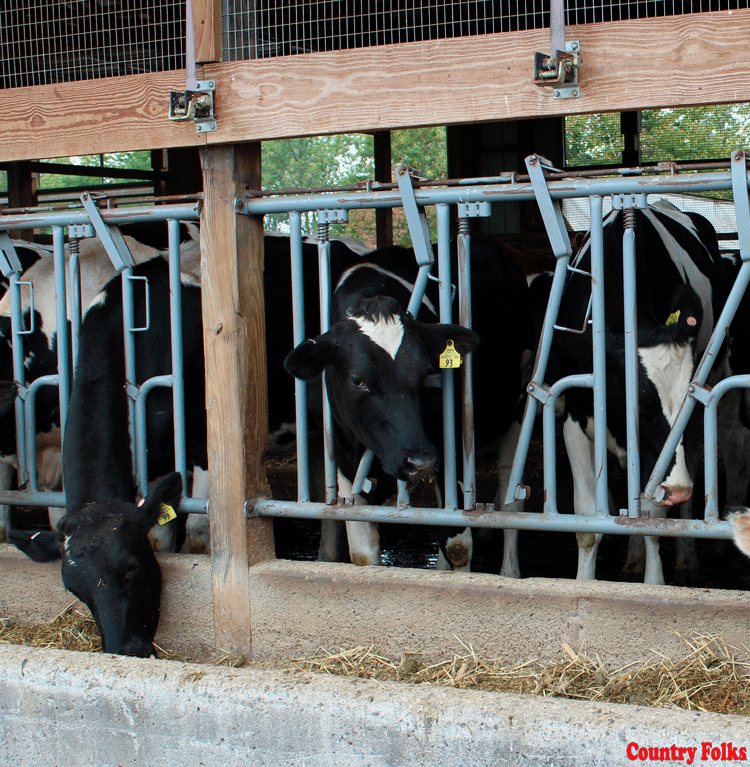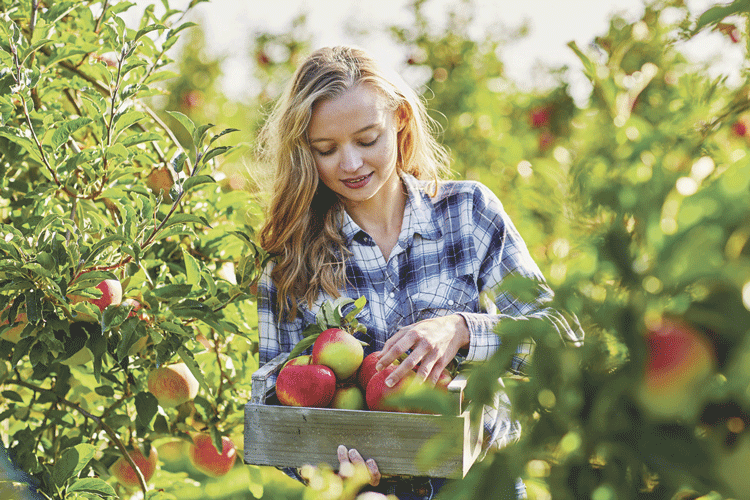 by Tamara Scully
by Tamara Scully
Supplementing the diet of organic dairy cows can be costly. Certified organic grain is expensive. While highly-managed pasture is the best defense, providing adequate nutrition year-round can be challenging. One source of supplemental feed which came to the attention of Dr. Kathy Soder, of the USDA-ARS (Agricultural Research Service), is molasses.
Soder coordinated several studies on the use of molasses feed in certified organic dairies. Karen Hoffman, of NRCS NY, and Andre Brito, of the University of New Hampshire, were two other key researchers involved in the project. Over the past four years, studies have been conducted both in the laboratory, at the University of New Hampshire’s organic dairy research farm, and on working farms in the Northeast.
Soder presented the results of various studies in a recent eOrganic Extension webinar. Soder explained that the studies were initiated after researchers learned that molasses was being used, with very mixed results, on dairy farms in the Northeast. With anecdotal evidence both for and against the effectiveness of molasses supplementation, controlled studies were needed to offer guidance to producers. Farmers have recently been using molasses due to the increased cost and some scarcity of availability of organic corn.
Laboratory
In the laboratory study, a fermenter, which serves as an artificial rumen, compared the effects of molasses and cornmeal supplementation in a simulated dietary study. The control diet was orchardgrass pasture. Three other diets compared were: orchardgrass plus molasses; orchardgrass plus cornmeal; and orchardgrass plus a combination of molasses and cornmeal. Data was also obtained from high-quality and low-quality pasture in all feed combinations.
The studies measured pH, volatile fatty acids, bacterial nitrogen efficiency, nitrogen utilization and nutrient digestability of the various diets. Microbial populations were not affected, and the volatile fatty acids were not altered by the diet. Molasses seemed to provide a ruminal environment similar to the cornmeal, at least at these low supplementation levels in the laboratory evaluation. Nutrient digestability tests showed that protein digestability is highest in the molasses diet.
“Both supplements increase protein digestability compared to the all-pasture diet,” Soder said.
The fermenters were then used to test the effects of forage quality when combined with the various levels of molasses supplementation. Molasses levels were tested at 5 percent and 10 percent supplementation on both high and low quality pasture. Very subtle changes in dry matter digestability associated with the forage quality was noted, although little to no molasses effects were seen. No significant interactions between molasses supplementation and ruminal fermentation, or molasses supplementation level and forage quality, were noted in the laboratory studies.
“The lab work was great, it provides some preliminary data, but it’s obviously not a cow,” Soder said.
Case study
An observational case study comparing the effectiveness of molasses supplementation compared to supplementation with a cornmeal/grain mix were conducted. An existing dairy farm, already successfully utilizing molasses for several years, was used in the study.
In 2008, the farm was supplementing pasture-based dairy cows with three pounds of molasses and one pound of cornmeal and barley grain mix per cow, per day. Based on body score and milk production figures, the diet was adjusted slightly several times in 2009, with the overall result of decreasing the molasses intake, and increasing the grain mix. In 2009, the farm was feeding 2-3 pounds of molasses per cow, per day, along with 2-3 pounds of grain mix on avearge.
This herd was a seasonal herd, calving in the spring. Consisting of approximately 60 crossbred cows, grazing on 80 acres of high-quality orchard grass, white clover and forbs, the study followed the cows during the grazing season, from May to November both years.
After analyzing the data, the study concluded that there was no statistically significant difference between the body weight gain or the milk production of the cows on the cornmeal supplement versus the ones on the molasses supplement. The milk protein was higher in 2009, possible because of the increased starch in the diet.
Researchers concluded that the sugar in molasses may not compensate for a decrease in dietary starch, and that increased energy may be warranted in order to increase milk production in the herd. Increased starch may also decrease nitrogen excretion and urea costs, and improve the utilization of pasture protein, Soder said. Further studies on higher amounts of cornmeal feed would have to be conducted.
The study was also used to test the Cornell Net Carbohydrate and Protein System Module, used to analyze diets, to see how well its predicted outcome matched the actual results seen in the herd. The CNCPS data indicated that energy was the most limiting factor in the herd’s milk production. The herd’s starch levels were well below recommended levels, while their sugar levels sometimes exceeded the recommended maximum.
University study
The dairy herd at the University of New Hampshire was split into two groups, either supplemented with molasses or with cornmeal. The cows were on pasture 20 hours/day, then were milked and individually fed their supplementation. Molasses was topdressed on baylage, while cornmeal was given in tubs. Numerous pasture samples were taken to estimate dry matter intact.
Milk yield, body weight, body condition, and many other factors were measured in the study, whose data is still being analyzed. Preliminary data did not show any significant difference in milk production, milk composition, or body weight changes. Milk urea nitrogen was increased in the cornmeal supplementation group, indicating a difference in nitrogen efficiency, Soder said.
There is some concern with regard to molasses potentially hindering nutrient digestability with higher supplementation levels. Molasses is rich in sucrose and other sugars, which are more quickly degraded in the rumen, in comparison to corn, which provides starch. If the level of sugars become too elevated, ruminal function will be impaired. Sugars are more completed degraded in the rumen, which can be good or bad, Soder said. The high sugar level shifts microbial production.
The level of proprianate, an important volatile fatty acid, will be affected with higher sugar levels. Ruminal pH can be decreased, as can ruminal fiber digestion. The ammonia concentration in the rumen can increase. Ammonia is converted into urea, and the excretion of increased urea is a waste of nutrients, can cause a variety of animal health concerns, as well as environmental concerns, Soder said.
In conclusion, Soder believes that molasses is not “a magic bullet,” but can be utilized as an alternative feed successfully, with some caution. Many factors may play a role in molasses feeding, and further studies are warranted. The timing of supplementation, whether given before or after grazing, can impact its digestibility. Other management practices on the farm, the level of supplementation and the adaptation of the cows to the molasses diet are some of the variables which may explain the wide array of results reported by dairy farmers in the field. While some dairy farmers felt that molasses offered three times the energy of cornmeal, studies show that the actual energy of molasses, on a dry matter basis, is about half as much per pound when feeding molasses, compared to that of cornmeal.
Soder currently is conducting and analyzing studies on flaxseed as an organic dairy cow alternative feed.
A fact sheet summarizing the molasses study data can be found at: ftp://ftp-fc.sc.egov.usda.gov/NY/news/factsheets/molasses_case_study.pdf











Leave A Comment